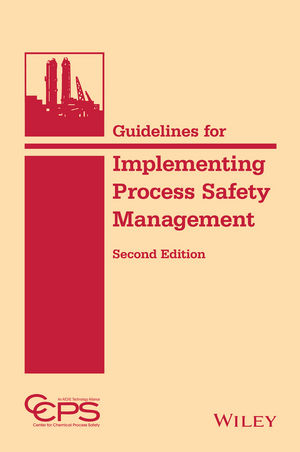Major chemical incidents can be prevented by applying process safety management principles. Process safety management (PSM) is the control of process hazards in order to prevent process-related injuries and incidents. The CSB has conducted seven investigations with 26 resulting recommendations relating to improving state and federal process safety management programs.
CSB Investigations and Recommendations involving Process Safety Management Modernization:
2013 - West Fertilizer Explosion and Fire
2012 - Chevron Richmond Refinery Fire Interim and Regulatory Reports
2011 - Donaldson Enterprises, Inc. Fatal Fireworks Disassembly Explosion and Fire
2010 - Tesoro Anacortes Investigation Report
2005 - BP Texas City Investigation Report
2001 - Motiva Refinery Investigation Report
2000 - Improving Reactive Hazard Management Study
Process safety regulations in the U.S. have undergone little reform since their inception in the 1990s. Following the April 2013 explosion and fire that occurred at a fertilizer storage and distribution facility in West, Texas, President Obama issued Executive Order 13650, Improving Chemical Facility Safety and Security. The Executive Order tasked a working group of federal agencies tasked with modernizing policies, regulations, and standards to improve the safety and security of chemical facilities.
Although recently there have been some positive initial steps taken toward significant improvement in process safety, more must be done to protect worker safety, public health, and the environment.
In the United States, process safety is regulated at the federal level by two programs:
US Environmental Protection Agency’s (EPA) Risk Management Plan (RMP) rule
Occupational Safety and Health Administration’s (OSHA) Process Safety Management (PSM) program.
Here are some CSB recommendations to date:
• Include reactive chemicals, high and/or low explosives, and ammonium nitrate as regulated substances.
•Enhance development and reporting of worst case and alternate release scenarios; and
• Add new prevention program requirements, including automated detection and monitoring, contractor selection and oversight, public disclosure of information, and, for petroleum refineries, attributes of goal-setting regulatory approaches.
CSB response to the EPA's March 14, 2016, Proposed Rule, “Accidental Release Prevention Requirements: Risk Management Programs Under the Clean Air Action, Section 112(r)(7).
• Include the Oil and Gas Sector and reactive chemicals in the rule’s coverage.
• Provide stop work authority to employees;
• Update existing Process Hazard Analysis requirements to include the documented use of inherently safer systems, hierarchy of controls, damage mechanism hazard reviews, and sufficient and adequate safeguards;
• Develop requirements for facility/process siting and human factors
• Require coordination of covered facility emergency plans with local emergency response authorities; and
• Permit third-party compliance audits.
Source: US Chemical Safety Board www.csb.gov



